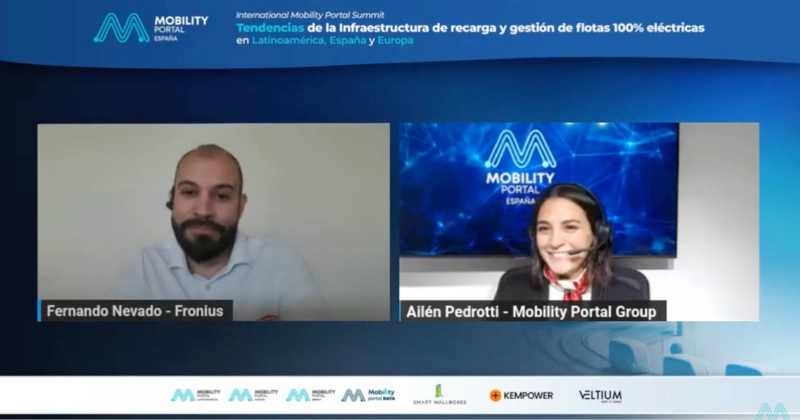
Will bidirectional charging be imposed as a solution to supply the electric car?
“Technically we believe it is possible. The technology is there and we are already working on it to launch the first chargers on the market,” Fernando Nevado, Technical Sales Advisor at Fronius, tells Mobility Portal España.
Within the framework of the “International Mobility Portal Summit”, the specialist explains that this solution has existed since the 90s and is the same one used for photovoltaic inverters.
The process consists of converting alternating current to direct and vice versa, and must comply with operating directives, electromagnetic compatibility and other additional network requirements.
However, “the regulations must follow this path.”
At this point Nevado highlights: “There must be a specific regulation for these bidirectional vehicle chargers that can accommodate us and ensure that car manufacturers are prepared to allow the charging of external elements.”
Bidirectional devices turn the eCar into a means of energy storage.
Not only this, but it also has the potential to generate additional value when combined with photovoltaic installations to maximize self-consumption.
The Ministry for the Ecological Transition and the Demographic Challenge (MITECO) contemplates this service in its Strategy for Energy Storage.
It estimates that by 2030, the zero-emission vehicle fleet will provide approximately 26 gigawatt-hour (GWh) per year of distributed storage using V2G (vehicle-to-grid) technology.
Member States must establish the necessary regulatory framework to facilitate the connection of public and private charging points to distribution networks, incorporating smart and bidirectional charging functions.
In Spain there is a regulation in process and it is expected to be approved in 2025, while other countries in the European Union are already implementing it.
This technology allows batteries to be used as energy sources for the entire network.
In such cases, they can store energy during periods of low demand and supply it during times of high prices or when solar or wind generation is limited.
“It is very important to link these charging points with photovoltaic energy,” says Nevado.
This will make it possible for all electric car projects to be linked to solar energy and vice versa.
“We seek this link so that all projects go to both parties, because otherwise neither of the two will be able to develop technically and economically in a viable way,” he emphasizes.
To promote this, Fronius aims to unite both the electrical demand of cars and solar generation, through, among other solutions, photovoltaic covers that allow self-consumption.
What advantages does the connection between the “two worlds” offer?
The use of renewables in electric fleets provides an economic benefit by recharging with the most affordable energy.
There is also a positive aspect from a technical point of view.
In what sense?
By being able to satisfy the demand peaks required by electric vehicle chargers during recharging, without the need to increase the contracted power and even compensating for deficits at certain points of interaction with the network.
The third advantage is environmental: “It would make no sense to supply cars with fossil energy.”
To make all this possible, Fronius has recently launched fleet management software designed for eCars linked to self-consumption.
This solution will also make it possible to prepare rates, charge vehicles using the available photovoltaic energy, or failing that, opt for the most economical prices.
As in turn, it will provide constant information on the updated generation of solar panels and the electrical demand of regular consumers in homes or industries.
This capacity will allow the integration of these two factors to optimize car charging in an economically efficient and environmentally friendly manner.
Its goal for 2024 is to introduce this innovation in the national territory.
To this end, it is actively working and collaborating with various partners to develop and adapt this technology to local needs.
Currently, the Fronius Wattpilot stands out in its offer, a solution for intelligently charging the vehicle in alternation with powers ranging between 11 and 22 kilowatts (kW) at the lowest price.

The range has two models.
The Home is a stationary version that connects directly to the installation panel.
The Go, meanwhile, is portable for use on the road during a trip or in a secondary residence.
Both versions offer sustainable charging with solar or green energy from the grid, and can also be monitored through the Solar.Wattpilot application.
Revive the “International Mobility Portal Summit”:








